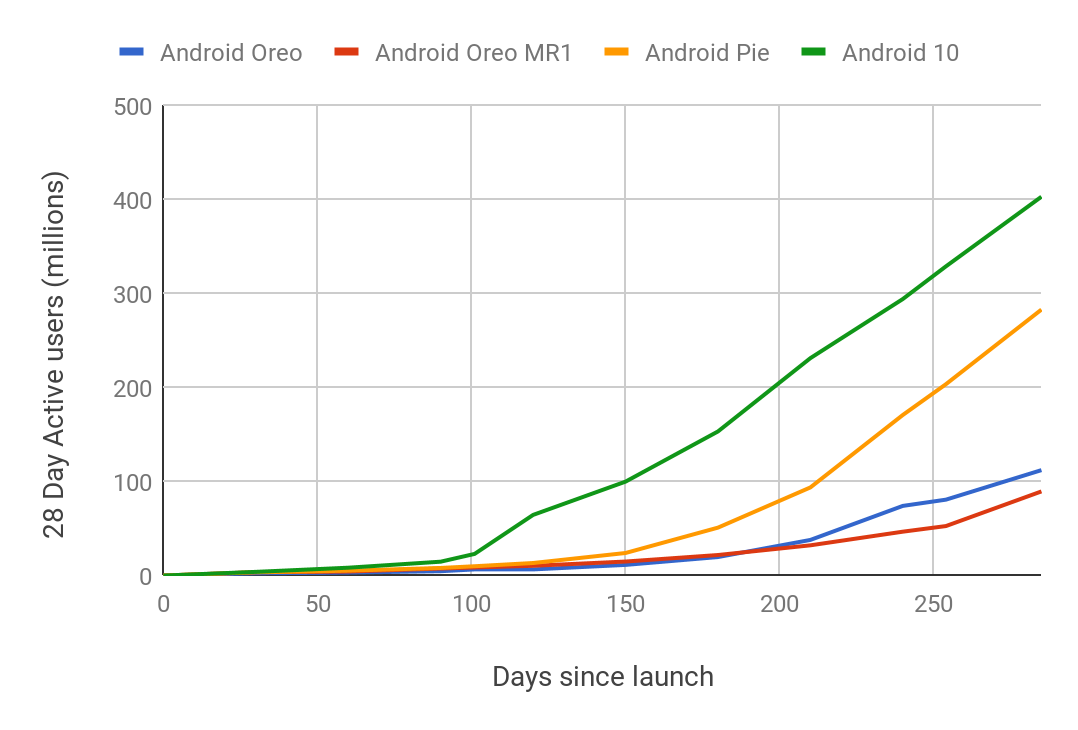One area of the Android ecosystem that can be frustrating is OEM updates to the OS. Some devices never get updated, some get updates right away while others get irregular updates. According to Google Android 10 has seen the best adoption of updates and Google’s hoping to make it even better.

With Android 10, Google has seen the fastest adoption of the update with 100 million devices running on Android 10 five months after the launch. It’s important to note this includes both new devices shipping with 10 and devices that were updated.
This improvement is due in part to all of the under the hood work Google has been doing to make updates easier for OEMS and users alike. Project Treble introduced a split in the storage on Android creating separate system and Vendor partitions in Android Pie. This made updates easier to write and deploy for OEMs.
Project Mainline was launched in Android 10 and brought with it the ability to split more updates out of the system update system, allowing core OS updates to be handled by Google Play. Mainline delivers Security and privacy updates without needing a full system update.
In Android 11 Google has split more components out of the system update allowing direct updates with Google Play. 21 distinct OS elements can now be independently updated, nine more than the last OS version. These components are targeting privacy, security and app consistency.

One significant update in Android 11 is the introduction of the Virtual A/B system partitions. Traditional updates require the live device to be updated, meaning a long and slow install process. With A/B updates there are 2 copies of the operating system which are updated out of sync, making updates faster for users as they mainly happen in the background.
A/B updates do require more of the system storage to be dedicated as there are always 2 copies of the OS on the drive. With Virtual A/B updates Google has developed a way to mimic in in the background update without the need for 2 persistent copies of the OS to always be taking up space.
Moving forward, which we assume means for any device shipping with Android 11 or later, virtual A/B updates will be the only supported method of OS update. Hopefully this will spur adoption of faster updates across the ecosystem.
Unfortunately none of these under the hood enhancements actually mean OEMs will provide updates faster, more frequently or at all. As a user you still need to make sure you’re going with a vendor, and a device that’s going to offer at least two years OS and three years of security updates, at least that’s our recommendation.





The A/B partitioning has been around for years. It’s just now been made mandatory.
technically it’s virtual A/B that has been made mandatory
“As a user you still need to make sure you’re going with a vendor, and a device that’s going to offer at least two years OS and three years of security updates, at least that’s our recommendation.”
This is primarily why I buy Pixel devices (and Nexus before that). Most other manufacturers are just so hit and miss with updates.